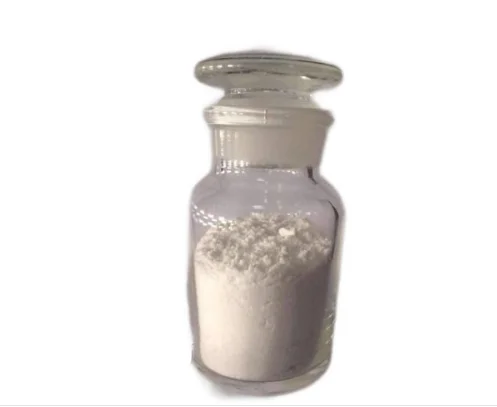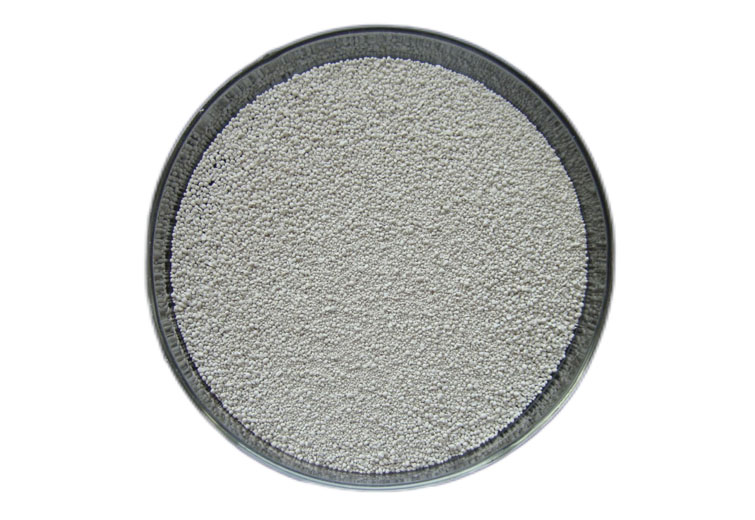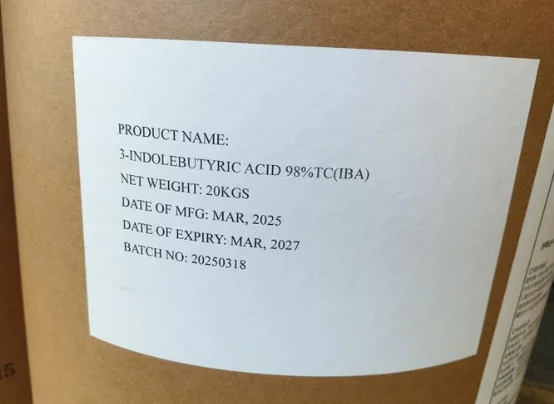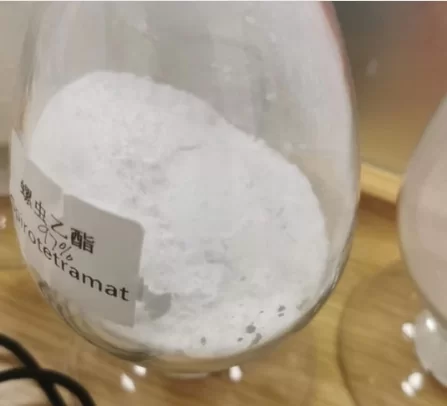Understanding Pyriproxyfen: A Key Insect Growth Regulator
In the relentless battle against pervasive insect pests that threaten agricultural yields, public health, and urban environments, the scientific community continually seeks innovative and sustainable solutions. Among these advanced tools, pyriproxyfen stands out as a highly effective and strategically important insect growth regulator (IGR). Unlike conventional neurotoxic insecticides that primarily target the adult nervous system, pyriproxyfen operates by mimicking the natural juvenile hormone of insects, thereby disrupting their normal development and reproductive cycles. This unique mechanism of action positions it as a cornerstone in modern integrated pest management (IPM) strategies, offering targeted control with a reduced impact on beneficial insects and the wider ecosystem. Its efficacy spans across a wide spectrum of insect orders, including Hemiptera (such as whiteflies, aphids, and scale insects), Diptera (mosquitoes), Siphonaptera (fleas), and Blattodea (cockroaches), making it a versatile asset in diverse pest control scenarios. This comprehensive overview will delve into the critical role of pyriproxyfen, exploring its technical nuances, market landscape, and pivotal applications that underscore its value in ensuring global food security and public well-being. From agricultural fields grappling with crop-destroying invaders to urban settings combating disease vectors, pyriproxyfen offers a sophisticated approach to pest management that aligns with contemporary demands for both efficacy and environmental responsibility. Its continued relevance is a testament to its unique mode of action and adaptability in confronting evolving pest challenges worldwide.

The Global Impact of Pests and the Need for Advanced Solutions
The sheer scale of damage inflicted by insect pests on a global level is staggering, presenting a relentless challenge to human health, agricultural productivity, and ecological balance. Annually, crop losses attributed to pests are estimated to range between 15% and 30% worldwide, translating into an economic impact of hundreds of billions of dollars. For instance, the global cotton industry alone faces annual losses exceeding $20 billion due to pests like whiteflies and bollworms, while citrus growers contend with significant damage from scale insects and psyllids. Beyond agriculture, the public health sector grapples with vector-borne diseases transmitted by insects. Mosquitoes, for example, are responsible for an estimated 700 million infections and over 1 million deaths each year from diseases such as malaria, dengue, Zika, and West Nile virus. Fleas and ticks contribute to the spread of Lyme disease, typhus, and plague, impacting millions annually. These statistics underscore a critical need for highly effective, yet environmentally judicious, pest management solutions. Traditional broad-spectrum insecticides, while effective in the short term, have often led to issues such as pest resistance, harm to non-target organisms including pollinators, and environmental persistence. This paradigm necessitates a shift towards innovative approaches that offer precise control, reduce resistance development, and align with sustainable practices. Insect Growth Regulators (IGRs) like pyriproxyfen represent this crucial evolution in pest control technology. By targeting specific physiological processes unique to insects, they offer a powerful alternative, breaking the pest life cycle at vulnerable stages without the broad ecological footprint of conventional pesticides. This strategic precision ensures that agricultural outputs are protected, public health crises are averted, and biodiversity is preserved, all while minimizing the risks associated with widespread chemical application.
Unpacking Pyriproxyfen's Technical Advantages and Mode of Action
The efficacy and strategic importance of pyriproxyfen stem directly from its unique and highly targeted mode of action as a juvenile hormone analog. In insects, juvenile hormones (JHs) play a critical role in regulating metamorphosis, molting, and reproduction. Pyriproxyfen mimics the natural juvenile hormone, but unlike the precise hormonal signals that guide development, its sustained presence at critical junctures disrupts these natural processes in a lethal manner. Specifically, pyriproxyfen interferes with the normal molting process from larva to pupa or pupa to adult, leading to the formation of morphological abnormalities, preventing successful eclosion (emergence from the pupal or nymphal cuticle), or causing sterility in adult insects. For instance, exposure during larval stages often results in "supernumerary instars" – larvae that fail to pupate properly – or malformed pupae that cannot develop into viable adults. When adults are exposed, pyriproxyfen can inhibit embryogenesis, leading to the production of non-viable eggs, effectively breaking the reproductive cycle.
This disruptive mechanism offers several profound technical advantages over conventional neurotoxic insecticides. Firstly, its selectivity is a key benefit; pyriproxyfen primarily affects insects and does not typically harm mammals, birds, or fish due to their lack of juvenile hormone systems, contributing to a favorable toxicological profile. Secondly, its action on various life stages – eggs, larvae, nymphs, and adult reproduction – provides comprehensive control that can prevent pest populations from reaching damaging levels. Many conventional insecticides target only specific adult stages, requiring repeated applications. Pyriproxyfen's ovicidal and larvicidal effects offer proactive prevention. Thirdly, its novel mode of action makes it an invaluable tool in resistance management strategies. As insects develop resistance to traditional chemical classes, rotating or combining with IGRs like pyriproxyfen can significantly prolong the efficacy of existing pesticides and mitigate the development of widespread resistance, a pressing concern in modern pest control. Lastly, its residual activity ensures prolonged protection, reducing the frequency of applications and the overall chemical load in the environment. These combined advantages position pyriproxyfen not merely as another insecticide, but as a sophisticated, environmentally conscious instrument for sustainable pest control across multiple sectors.
Leading Manufacturers and Their Offerings
The global market for pyriproxyfen is served by a range of reputable chemical manufacturers and formulators, each bringing distinct strengths in terms of product purity, formulation diversity, research investment, and global distribution networks. Selecting the right supplier is paramount for end-users, as quality variances can significantly impact efficacy, environmental profile, and regulatory compliance. A comparative analysis reveals key differentiators among the leading players, extending beyond mere product availability to encompass robust R&D, stringent quality control, and commitment to sustainable practices.
Key parameters for evaluating manufacturers typically include:
· Active Ingredient Purity: Higher purity levels ensure consistent performance and minimize inert or potentially harmful byproducts.
· Formulation Expertise: Manufacturers skilled in diverse formulations (e.g., Emulsifiable Concentrates (EC), Suspension Concentrates (SC), Wettable Powders (WP), Granules (GR)) can cater to broader application needs.
· Research & Development Investment: Companies that continuously invest in R&D often lead with novel formulations, improved stability, and advanced delivery systems.
· Regulatory Compliance & Certifications: Adherence to international standards (e.g., ISO, REACH, specific national pesticide regulations) ensures product safety and market access.
· Global Supply Chain & Technical Support: Robust logistics and comprehensive technical assistance are crucial for consistent supply and effective product use.
· Sustainability Initiatives: Commitment to eco-friendly manufacturing processes and packaging, as well as support for IPM programs.
The following table provides a generalized comparison, highlighting typical strengths without endorsing specific brands, as market dynamics and product portfolios can evolve.
Criterion | Manufacturer A (e.g., Established Global Player) | Manufacturer B (e.g., Specialized IGR Producer) | Manufacturer C (e.g., Emerging Regional Supplier) |
Typical Purity (AI) | ≥98.5% | ≥99.0% | ≥97.0% |
Formulation Range | Extensive (EC, SC, WP, GR, UL) | Focused (High-quality SC, EC) | Limited (Common EC, WP) |
R&D Investment | High, continuous innovation in delivery | Moderate-High, focus on IGR specificity | Low-Moderate, mostly generic formulations |
Global Reach | Excellent, global distribution & support | Strong in key agricultural regions | Primarily regional/national focus |
Certifications | ISO 9001, 14001, REACH, national registrations | ISO 9001, key regional registrations | Basic national certifications |
Sustainability Focus | Strong, eco-friendly practices, IPM support | Moderate, focus on reduced environmental impact | Limited, compliance-driven |
This comparison highlights that while some manufacturers excel in broad-spectrum global presence and extensive R&D, others specialize in high-purity IGR production or cater more effectively to regional markets with cost-effective solutions. The choice depends on the specific requirements, regulatory environment, and desired level of quality assurance for the application in question.
Tailored Formulations: Customizing Pyriproxyfen for Diverse Needs
The versatility of pyriproxyfen as an insect growth regulator is significantly enhanced by its ability to be formulated into a wide array of product types, allowing for highly customized solutions that precisely address the nuances of different pest challenges, application environments, and target crops or hosts. The selection of a specific formulation is not arbitrary; it is a critical decision influenced by factors such as the target pest’s biology, the application method, environmental conditions, applicator safety, and regulatory requirements. This adaptability makes pyriproxyfen an invaluable tool in diverse integrated pest management (IPM) programs.
Common formulations include:
· Emulsifiable Concentrates (EC): These formulations contain the active ingredient dissolved in an organic solvent, along with emulsifiers, allowing for easy mixing with water to form an emulsion. ECs are popular for agricultural sprays due to their excellent coverage and absorption properties, making them suitable for foliar applications targeting pests like whiteflies and scale insects on fruit trees and vegetables.
· Suspension Concentrates (SC): SC formulations consist of finely ground solid particles of pyriproxyfen suspended in a liquid (usually water), without the use of organic solvents. They are valued for their reduced environmental impact and lower odor, making them ideal for sensitive environments such as greenhouses or public health applications where solvent-based products might be undesirable. SCs offer good residual activity and can be used in precision spray applications.
· Wettable Powders (WP): WPs are dry formulations that contain the active ingredient adsorbed onto a fine inert powder, along with wetting agents. They are mixed with water to form a suspension and sprayed. WPs offer advantages in terms of storage stability and ease of transport, often used in large-scale agricultural operations or for specific public health interventions where high concentrations are needed.
· Granules (GR): Granular formulations consist of the active ingredient impregnated or coated onto porous inert carriers. These are typically applied directly to soil or water bodies without mixing with water. Pyriproxyfen granules are particularly effective in mosquito larval control in standing water, where the active ingredient is slowly released, providing extended control. They are also used in turf and ornamental applications.
· Ultra Low Volume (ULV) Formulations: Designed for specialized aerial or ground applications using minimal water, ULV formulations allow for rapid coverage over large areas, which is crucial in public health emergencies, such as widespread mosquito outbreaks.
Beyond these standard types, customized pyriproxyfen solutions often involve synergistic blends with other active ingredients. For instance, combining pyriproxyfen with a fast-acting adulticide provides both immediate knockdown and long-term developmental control, offering a more robust IPM approach. Furthermore, microencapsulation technologies are being explored to enhance the stability, residual activity, and controlled release of pyriproxyfen, especially in challenging environmental conditions or for prolonged protection. Tailored formulations also extend to specific bait matrices for pests like cockroaches or ants, where pyriproxyfen can be incorporated to disrupt colony reproduction. The ability to fine-tune the delivery mechanism and concentration of pyriproxyfen allows pest management professionals and agriculturalists to implement precise, efficient, and environmentally responsible control programs, optimizing performance while minimizing off-target effects. This flexibility is a testament to its pivotal role in adaptive pest management strategies globally.
Real-World Application Successes
Pyriproxyfen's strategic value is best demonstrated through its diverse and impactful applications across agricultural, public health, and urban pest management sectors worldwide. Its unique mode of action, coupled with its versatility in formulation, has led to numerous success stories in controlling some of the most challenging insect pests.
In agriculture, pyriproxyfen has become an indispensable tool for managing a spectrum of sap-feeding insects that cause significant economic damage. For instance, in cotton cultivation across the southern United States and parts of Asia, whiteflies (Bemisia tabaci) are notorious for causing yield losses and transmitting plant viruses. Integrated programs incorporating pyriproxyfen, applied at early nymphal stages, have demonstrated a remarkable reduction in whitefly populations, leading to improved cotton fiber quality and increased yields, with some studies showing a 30-40% reduction in infested leaves compared to untreated plots. Similarly, citrus growers in regions like Florida and Brazil utilize pyriproxyfen to control citrus mealybugs and scale insects, which can devastate fruit quality and tree health. Strategic applications targeting juvenile stages have shown to reduce mealybug populations by over 70% within two weeks of application, significantly enhancing marketable fruit production. Its efficacy against leafhoppers, vectors of grape diseases like Pierce's disease, has also made it a vital component in vineyard protection programs, where it helps interrupt the disease cycle by targeting the vector's early life stages.
In the realm of public health, pyriproxyfen plays a critical role in controlling vector-borne diseases. It is widely recognized for its effectiveness against mosquitoes, particularly Aedes aegypti and Anopheles species, which transmit dengue, Zika, and malaria. Applied as a larvicide in standing water bodies such as discarded tires, flower pots, and water storage containers, pyriproxyfen prevents adult mosquito emergence. Field trials in Southeast Asia and South America have shown that a single application of pyriproxyfen to breeding sites can maintain over 95% larval control for several weeks, dramatically reducing the adult mosquito population and subsequently the risk of disease transmission in urban areas. This is particularly crucial in preventing outbreaks during rainy seasons. Furthermore, pyriproxyfen is a key active ingredient in formulations used for flea control in companion animals and premises. Applied as a spot-on treatment or premise spray, it breaks the flea life cycle by preventing eggs and larvae from developing into adults, achieving up to 99% control of flea infestations within a month. In urban environments, it contributes to cockroach management, preventing nymphs from developing into reproductive adults and thereby impacting population growth. These real-world applications underscore pyriproxyfen's capacity to deliver effective, long-lasting, and environmentally responsible pest control solutions that safeguard agricultural productivity and human health on a global scale.
The Enduring Role of Pyriproxyfen in Sustainable Pest Management
As the world continues to grapple with the multifaceted challenges posed by evolving insect pests and the imperative for sustainable agricultural and public health practices, the role of pyriproxyfen remains more critical than ever. Its unique mechanism of action as a juvenile hormone analog distinguishes it from conventional neurotoxic pesticides, offering a highly targeted and effective means of disrupting pest life cycles without broadly impacting non-target organisms. This selectivity is not just an ecological advantage but also a strategic one, facilitating its integration into sophisticated Integrated Pest Management (IPM) programs that prioritize long-term sustainability and resistance management. The ability of pyriproxyfen to control pests at multiple developmental stages—from inhibiting egg hatch to preventing successful adult emergence and inducing sterility in adults—provides comprehensive, season-long protection that is difficult to achieve with other chemical classes.
Looking ahead, the demand for such precise and environmentally considerate pest control tools is only set to increase. Climate change continues to expand the geographical range of many insect pests and disease vectors, while evolving resistance patterns necessitate a constant search for new modes of action. In this dynamic landscape, pyriproxyfen offers a proven and reliable solution, underpinning efforts to secure food supplies and protect public health. Its continued utility will rely on ongoing research into novel formulations, synergistic applications with biological control agents, and intelligent deployment strategies that optimize its efficacy while minimizing environmental footprints. The journey towards truly sustainable pest management is a complex one, requiring a blend of innovation, ecological understanding, and responsible application. In this journey, pyriproxyfen stands as a testament to scientific progress, embodying the principles of effective, selective, and environmentally sound pest control that will undoubtedly continue to play a pivotal role in safeguarding our planet's agriculture and health for generations to come.
Frequently Asked Questions About Pyriproxyfen
· Q1: What is pyriproxyfen and how does it work?
A1: Pyriproxyfen is an insect growth regulator (IGR) that mimics the natural juvenile hormone of insects. It disrupts the normal development process, preventing pests from maturing into reproductive adults, inhibiting egg hatch, or causing developmental abnormalities in larvae and nymphs.
· Q2: What types of pests does pyriproxyfen control?
A2: Pyriproxyfen is effective against a broad spectrum of pests, including whiteflies, aphids, scale insects, leafhoppers, mosquitoes (especially larvae), fleas, and cockroaches. It is widely used in agriculture, public health, and veterinary pest control.
· Q3: Is pyriproxyfen safe for humans and pets?
A3: Pyriproxyfen has a favorable toxicological profile because its mode of action targets specific insect physiological processes (juvenile hormone system) that are not present in mammals, birds, or fish. When used according to label instructions, it is generally considered safe for humans and pets, although direct exposure should always be avoided.
· Q4: How does pyriproxyfen contribute to resistance management?
A4: As an IGR with a unique mode of action, pyriproxyfen is an excellent tool for rotation or combination with conventional insecticides. This helps to break the cycle of resistance development by applying different chemical classes, thus prolonging the effectiveness of various pest control agents.
· Q5: What are the common formulations of pyriproxyfen?
A5: Pyriproxyfen is available in various formulations, including Emulsifiable Concentrates (EC), Suspension Concentrates (SC), Wettable Powders (WP), and Granules (GR). The choice of formulation depends on the specific application, target pest, and environmental conditions.
· Q6: How long does pyriproxyfen remain effective after application?
A6: Pyriproxyfen generally offers good residual activity, meaning it remains effective for an extended period after application. The exact duration can vary significantly based on the formulation, application surface, environmental factors (e.g., UV light, rainfall), and target pest, often ranging from several weeks to a few months.
· Q7: Can pyriproxyfen be used in organic farming?
A7: While pyriproxyfen has a targeted mode of action and a favorable environmental profile compared to many conventional pesticides, it is generally not approved for use in certified organic farming systems. Organic agriculture typically relies on natural pest control methods and strictly prohibits most synthetic pesticides, including pyriproxyfen.












